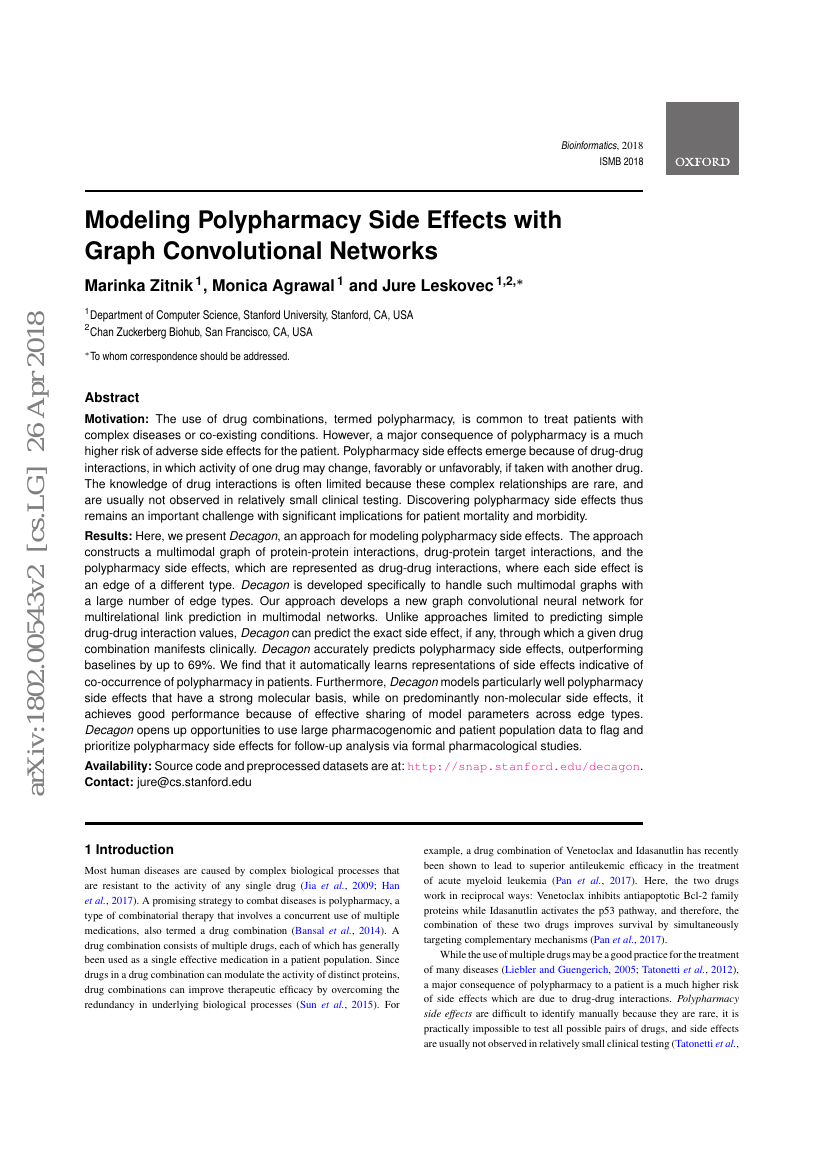Command Palette
Search for a command to run...
Marinka Zitnik; Monica Agrawal; Jure Leskovec

Abstract
The use of drug combinations, termed polypharmacy, is common to treat patients with complex diseases and co-existing conditions. However, a major consequence of polypharmacy is a much higher risk of adverse side effects for the patient. Polypharmacy side effects emerge because of drug-drug interactions, in which activity of one drug may change if taken with another drug. The knowledge of drug interactions is limited because these complex relationships are rare, and are usually not observed in relatively small clinical testing. Discovering polypharmacy side effects thus remains an important challenge with significant implications for patient mortality. Here, we present Decagon, an approach for modeling polypharmacy side effects. The approach constructs a multimodal graph of protein-protein interactions, drug-protein target interactions, and the polypharmacy side effects, which are represented as drug-drug interactions, where each side effect is an edge of a different type. Decagon is developed specifically to handle such multimodal graphs with a large number of edge types. Our approach develops a new graph convolutional neural network for multirelational link prediction in multimodal networks. Decagon predicts the exact side effect, if any, through which a given drug combination manifests clinically. Decagon accurately predicts polypharmacy side effects, outperforming baselines by up to 69%. We find that it automatically learns representations of side effects indicative of co-occurrence of polypharmacy in patients. Furthermore, Decagon models particularly well side effects with a strong molecular basis, while on predominantly non-molecular side effects, it achieves good performance because of effective sharing of model parameters across edge types. Decagon creates opportunities to use large pharmacogenomic and patient data to flag and prioritize side effects for follow-up analysis.
Code Repositories
Benchmarks
| Benchmark | Methodology | Metrics |
|---|---|---|
| link-prediction-on-decagon | Decagon | AUPRC: 0.832 AUROC: 0.872 mAP@50: 0.803 |
Build AI with AI
From idea to launch — accelerate your AI development with free AI co-coding, out-of-the-box environment and best price of GPUs.